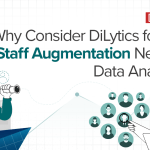As organizations look to stay competitive and meet their business goals, effective workforce planning and analytics play a crucial role. Workforce planning and analytics is the process of understanding and anticipating the need for personnel in an organization. It involves analyzing data and trends to make informed decisions about staffing levels, skills, and diversity. With the right workforce planning and analytics strategy, organizations can create a more productive and efficient workforce that meets their goals and objectives.
Why are Workforce Planning and Analytics Important?
The importance of workforce planning and analytics cannot be overstated. By anticipating and understanding workforce needs, organizations can:
- Avoid skills shortages and surplus: Without proper planning, organizations can experience a shortage of workers with specific skills, leading to increased costs and lost productivity. On the other hand, having too many workers can lead to inefficiencies and reduced competitiveness.
- Improve productivity: A well-planned workforce is more productive, as workers are better equipped to meet the organization’s needs.
- Attract and retain top talent: A focus on workforce planning and analytics can help organizations understand the skills and attributes they need in employees, making it easier to attract and retain top talent.
- Ensure diversity: With a focus on workforce planning and analytics, organizations can ensure that their workforce is diverse and inclusive, reflecting the communities they serve.
Steps in Workforce Planning and Analytics
- Define goals and objectives: Organizations must define what they want to achieve with their workforce planning and analytics strategy. This may include reducing costs, improving productivity, or enhancing diversity.
- Gather and analyze data: Organizations must gather data on their current workforce, including skills, demographics, and job performance. This data can then be analyzed to identify trends and patterns.
- Forecast workforce needs: Organizations must anticipate future workforce needs, taking into account factors such as retirements, economic conditions, and technology trends.
- Develop strategies: Based on the data and forecasts, organizations must develop strategies to address their workforce needs, including recruiting, training, and retention strategies.
- Implement and monitor: Organizations must implement their workforce planning and analytics strategies, regularly monitoring and adjusting them as needed.
Workforce Analytics can be broadly categorized into the following types:
Demographic analysis: This type of analysis focuses on understanding the demographic characteristics of an organization’s workforce such as age, gender, race, education, etc.
Workforce planning and forecasting: This type of analysis helps organizations predict future workforce needs, based on business goals, workforce trends and other factors.
Attrition analysis: This type of analysis helps organizations understand the reasons behind employee turnover and design retention strategies.
Talent acquisition analysis: This type of analysis helps organizations understand their recruitment process and make data-driven decisions to improve the process.
Performance analysis: This type of analysis helps organizations understand the performance of individual employees, teams and the overall workforce, to identify areas for improvement.
Compensation analysis: This type of analysis helps organizations understand the costs and structure of their compensation program and make data-driven decisions to optimize costs.
Diversity and Inclusion analysis: This type of analysis helps organizations understand the diversity of their workforce and design strategies to create a more inclusive workplace.
Benefits of Workforce Planning and Analytics
Improved Decision Making: Workforce planning and analytics help organizations make informed decisions about the size, composition, and skills of their workforce. By understanding the current and future workforce requirements, organizations can make better decisions about recruitment, talent development, and resource allocation.
Increased Productivity: With workforce planning and analytics, organizations can optimize their staffing levels to ensure that they have the right number of employees in the right roles, at the right time. This can help to increase productivity and reduce costs associated with over- or under-staffing.
Better Workforce Retention: Workforce planning and analytics allow organizations to identify trends in employee turnover and the reasons behind it. By addressing these issues, organizations can improve employee retention and reduce the costs associated with turnover.
Improved Talent Management: Workforce planning and analytics can help organizations identify and develop the skills of their current and future employees, improving their ability to meet future workforce requirements.
Better Compliance: With accurate data about the workforce, organizations can ensure that they are meeting all legal requirements and avoiding potential legal penalties.
Improved Forecasting: Workforce planning and analytics allow organizations to better predict future workforce requirements and make plans accordingly, improving their ability to respond to changes in demand.
Better Resource Allocation: By understanding the skills and expertise of their current and future workforce, organizations can allocate resources more effectively, improving efficiency and reducing waste.
Improved Employee Engagement: With a better understanding of their workforce, organizations can tailor their policies and programs to better meet the needs and preferences of employees, improving employee engagement and satisfaction.
Who is in charge of Workforce Planning?
There are many stakeholders involved in this process, each with a different function to play. Although the HR department is primarily in charge of developing and implementing a workforce planning strategy, line and functional managers, finance, and senior leadership are all crucial stakeholders.
In the same way that the finance function should provide critical insights into the financial implications of a company’s talent management operations, executive leadership is responsible for involving the entire C-Suite in setting business directions that will become an important part of the workforce planning process.
On the other side, functional, line, and programme managers can provide useful workforce insights such as the necessary abilities, backgrounds, and performances that both present and future personnel acquisitions should meet.
Conclusion
Workforce planning and analytics are crucial components of any organization’s strategy. By analyzing data and trends, companies can make informed decisions about their current and future workforce, ensuring they have the right employees in the right positions at the right time. By staying ahead of the curve in terms of staffing needs and keeping a pulse on industry trends, organizations can stay competitive and meet their business goals.
There are many potential benefits of leveraging workforce analytics, and it is up to management to determine how best to use this information for their company’s success. To implement workforce analytics, you can reach out to us at [email protected].





